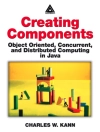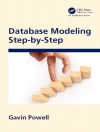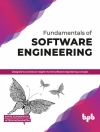The two-volume set LNAI 8856 and LNAI 8857 constitutes the proceedings of the 13th Mexican International Conference on Artificial Intelligence, MICAI 2014, held in Tuxtla, Mexico, in November 2014. The total of 87 papers plus 1 invited talk presented in these proceedings were carefully reviewed and selected from 348 submissions. The first volume deals with advances in human-inspired computing and its applications. It contains 44 papers structured into seven sections: natural language processing, natural language processing applications, opinion mining, sentiment analysis, and social network applications, computer vision, image processing, logic, reasoning, and multi-agent systems, and intelligent tutoring systems.
The second volume deals with advances in nature-inspired computation and machine learning and contains also 44 papers structured into eight sections: genetic and evolutionary algorithms, neural networks, machine learning, machine learning applications to audio and text, data mining, fuzzy logic, robotics, planning, and scheduling, and biomedical applications.
Daftar Isi
Genetic and Evolutionary Algorithms Performance Classification of Genetic Algorithms on Continuous Optimization Problems.- A Multi-objective Genetic Algorithm for the Software Project Scheduling Problem.- An Effective Method for MOGAs Initialization to Solve the Multi-Objective Next Release Problem.- Extension of the Method of Musical Composition for the Treatment of Multi-objective Optimization Problems.- k-Nearest-Neighbor by Differential Evolution for Time Series Forecasting.- A Binary Differential Evolution with Adaptive Parameters Applied to the Multiple Knapsack Problem.- Neural Networks.- The Best Neural Network Architecture.- On the Connection Weight Space Structure of a Two-Neuron Discrete Neural Network: Bifurcations of the Fixed Point at the Origin.- Stability of Modular Recurrent Trainable Neural Networks.- Intelligent Control of Induction Motor Based Comparative Study: Analysis of Two Topologies.- Auto-Adaptive Neuro-Fuzzy Parameter Regulator for Motor Drive.- Machine Learning.- Voting Algorithms Model with a Support Sets System by Class.- A Meta Classifier by Clustering of Classifiers.- Multiple Kernel Support Vector Machine Problem Is NP-Complete.- Feature Analysis for the Classification of Volcanic Seismic Events Using Support Vector Machines.- A Hierarchical Reinforcement Learning Based Artificial Intelligence for Non-Player Characters in Video Games.- Wind Power Forecasting Using Dynamic Bayesian Models.- Predictive Models Applied to Heavy Duty Equipment Management.- Customer Churn Prediction in Telecommunication Industry: With and without Counter-Example.- Machine Learning Applications to Audio and Text Audio-to-Audio Alignment for Performances Tracking.- Statistical Features Based Noise Type Identification.- Using Values of the Human Cochlea in the Macro and Micro Mechanical Model for Automatic Speech Recognition.- Identification of Vowel Sounds of the Choapan Variant of Zapotec Language.- An Open-Domain Cause-Effect Relation Detection from Paired Nominals.- An Alignment Comparator for Entity Resolution with Multi-valued Attributes.- Data Mining.- Data Mining for Discovering Patterns in Migration.- Horizontal Partititoning of Multimedia Databases Using Hierarchical Agglomerative Clustering.- Classification with Graph-Based Markov Chain.- Solving Binary Cutting Stock with Matheuristics.- Fuzzy Logic.- Nature-Inspired Optimization of Type-2 Fuzzy Systems.- Hierarchical Genetic Algorithms for Fuzzy Inference System Optimization Applied to Response Integration for Pattern Recognition.- Low-Cost Fuzzy-Based Obstacle Avoidance Method for Autonomous Agents.- Fuzzy Controller for a Pneumatic Positioning Nonlinear System.- Yager–Rybalov Triple Π Operator as a Means of Reducing the Number of Generated Clusters in Unsupervised Anuran Vocalization Recognition.- Robotics, Planning, and Scheduling.- AI-Based Design of a Parallel Robot Used as a Laser Tracker System: Intelligent vs. Nonlinear Classical Controllers.- Simple Direct Propositional Encoding of Cooperative Path Finding Simplified Yet More.- Pendulum Position Based Fuzzy Regulator of the Furuta Pendulum – A Stable Closed-Loop System Design Approach.- A Fast Scheduling Algorithm for Detection and Localization of Hidden Objects Based on Data Gathering in Wireless Sensor Networks.- A Constraint-Based Planner for Mars Express Orbiter.- Biomedical Applications.- Glucose Oxidase Biosensor Modeling by Machine Learning Methods.- On the Breast Mass Diagnosis Using Bayesian Networks.- Predicting the Occurrence of Sepsis by In Silico Simulation.- Data Mining and Machine Learning on the Basis from Reflexive Eye Movements Can Predict Symptom Development in Individual Parkinson’s Patients.- Agents That Help to Avoid Hyperthermia in Young Children Left in a Baby Seat Inside an Enclosed Car.












